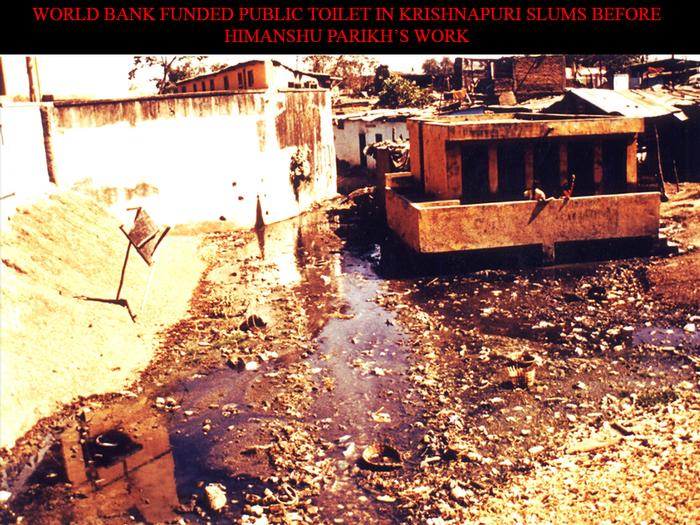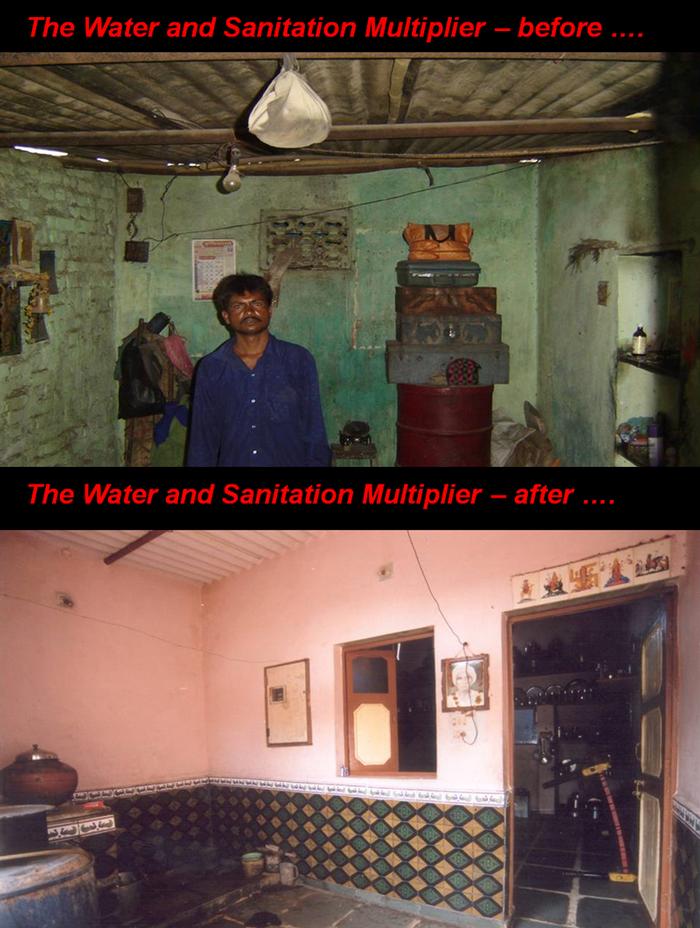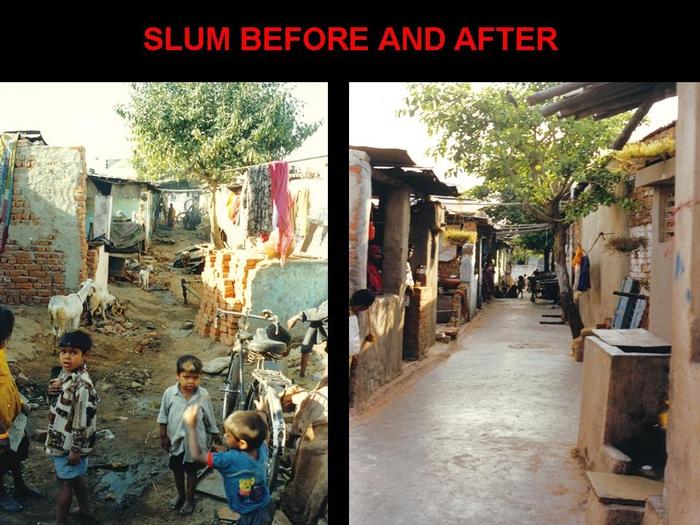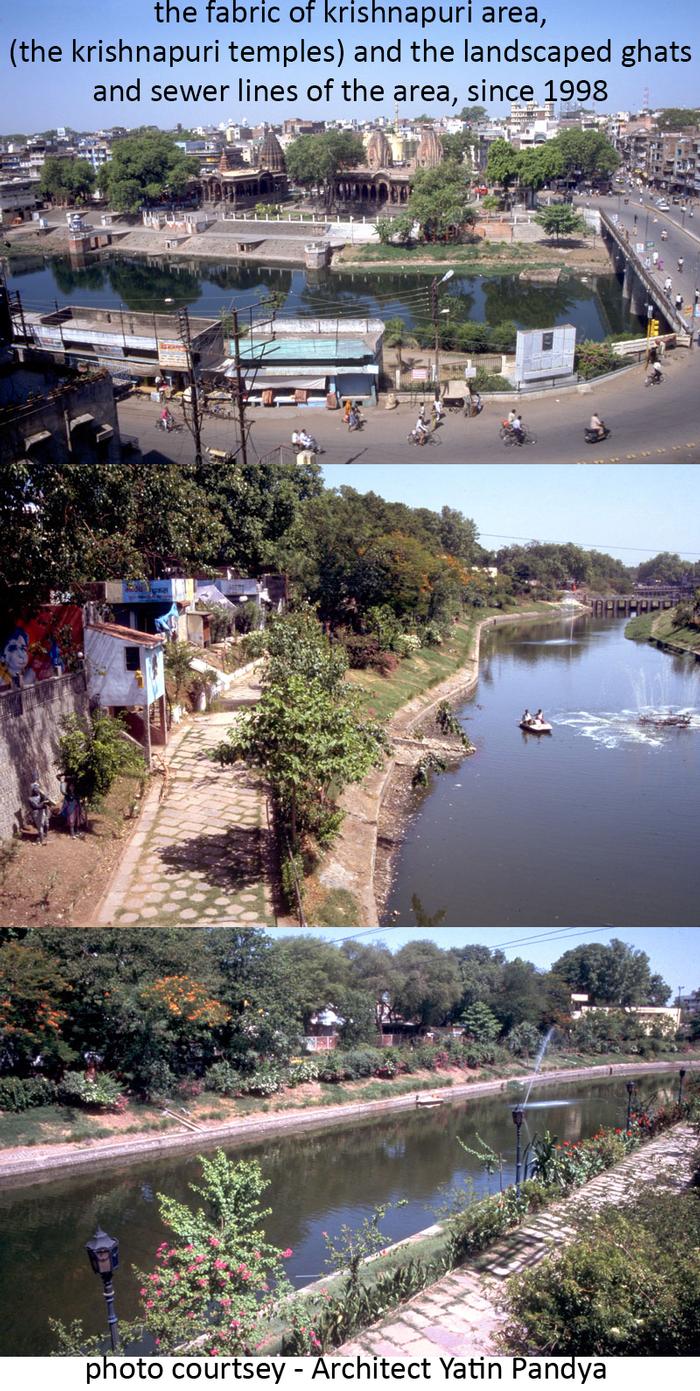[ID:1405] Imagine There are No Slums : Mainstreaming an image with dignityIndia DIARY OF A MIGRANT
‘I am awake, yet again, from the smell of burning eucalyptus and the monsoon rain. The roof roars from the force of falling droplets, it seems to be giving away, making noises of what a sinking ship would sound like. A trail of water leaks profusely from that hole, splattering as it hits the humble mud flooring, dampening it, breaking it, next to where I sit now, dampening my bed; it’s cold now! These brick walls, the atmosphere they contain is moist, stagnant, as it has felt for days. Outside the curtain is worse, those aghast faces …I hate to see them every morning. This disease is an immense weight pressing down on me, I cannot bear. I only pray for my son to survive… This feeling is sickening.’
“It must have been a sinking feeling. To face the image of your despondency every day and realize, there is nothing to be done, but to get through it somehow. To see your life savings, your dreams draining out – to see your son suffer… These were some of the worst times my father endured, as I understand from his diary. It must have been truly bad.” said Mr.Kamal Yadav with an empathetic frown as we stood on the threshold of the Krishnapuri temple by the ghats of the serene running waters of Khan River. He then guided us to his humble 23 square metre plot where his father wrote this excerpt in 1969 [*1].
A hundred meters from temple, we could see shaded pathways lined with trees on either side. As we turned round the corner, a colourful cluster of houses bustling with activities greeted us. An elderly woman sitting on the front porch of her house, eyed us curiously while combing her granddaughter’s hair. A little while later, we arrived at a small blue house. A few shrubs in the front of the house shaded the otla (veranda). Inside, we were seated on two comfortable chairs while tea was offered on a small table. Blanched grey tiles adorned the floor. The room extended into the kitchen where rows of plates and cups were arranged neatly. The overall picture was that of a ‘home’, one prided to live in.
Mr. Yadav’s father, he recalled, like thousands of others was a part of the inward migration of rural populace of Indore, over half a century back. Crowned by the epithet as the “Magnificence of Malwa”, the city known for the confluence of Khan and Saraswati River, and its plateaus, which together provided for its resources; its temple and rich history provided for its culture and its growing textile mills spreading along the banks of rivers, for its booming economy. His father found employment in one of the mills near Krishnapuri, with a dream to own his own cottage workshop one day.
Since the beginning, in 1965, there was a shortage of housing in the area. The immense populace resorted to squatters around the mills, the ghats and other desirable landmarks. In 1969, there was a recorded shortage of 20,000 houses in the area. These settlements lacked basic water supply provisions and were characterized by clogged sewerage and drain lines, ill maintained unmetalled roads, and dilapidated sheds. Residing there was the then 10 year old Kamal Yadav and his family. This is when the Cholera pandemic hit Indore...
A CITY IN DESPAIR
The conditions of such families only declined over the next decade. Several housing schemes were implemented only to see the shortage rising to 51,000 in 1981, to a point where the harrowing place was declared unfit for human in-habitation by the Indore Development Authority (IDA). The IDA then leased plots of a maximum 32 sq. metres in hope that after finding a sense of ownership, people themselves will correct their standard of living, but to no avail. “Years of depravity and sense of helplessness had created a mental state of poverty that needed to be broken.” comments Mr. Himanshu Parikh, a renowned Civil Engineer from Ahmedabad who at that time was working on Aranya Housing, Indore.
The government then continued its plantation of Eucalyptus trees to reduce soil degradation, but contamination increased over the years. Several rehabilitation projects that saw construction of high rise buildings worsened the condition of slum dwellers, for it disturbed the local socio-economic construct of people whose life was based on streets. Then the government resorted to small healthcare and education programmes that saw the construction of several community toilets, with financial assistance from the World Bank. However, these were contaminated too; clogged and overflowing, stagnating in over a year. These at some places were found disrupting the already poor flow of storm water drainage. “Once you realize the simple principle that water flows from a higher level to lower level, all your problems are solved. These brilliant world architects kept missing that.” mocks Mr. Parikh sarcastically.
By 1985, there were a total of 183 slums in Indore spread around the major economic zones, river-fronts and sewerage lines. Their increasing contamination polluted the river water, disturbed its natural flow, put pressure on the main sewage line of Indore, reduced the quality of drinking water, and constantly put the city at risks of pandemics. The physical and psychological state of being of people of Krishnapuri and the slum network was falling and the entire city was facing its consequences. “You can imagine the scale of almost two hundred slums spread over a city. They were based around your landmarks, your economic zones, your natural resources and their people constituted your major workforce. And when these areas started to implode, it was as if the whole city was falling apart. The health and hygiene of the entire city was at risk, land values fell, economic output of the city decreased, investments plummeted and the desirability of property in Indore lowered. The city was decrepit.” recalls Niharika Singh, a property developer and investor.
Finally in 1987, IDA contacted Mr. Parikh to rehabilitate the slum network of the city. As he began the herculean task of locating each of the slums on the map, he realized that flamboyant housing concepts and felicitous models would not help much. The first challenge was the tiny budget of Rs.6000 per dwelling that couldn't have produced adequate built spaces. Then, his observations of a person toiling in his poverty with a family of five to six, countered a permanent replacement of a shed as a viable alternative. Such a person survives on a day to day basis and a house is a long term concept. He realized there was no ‘long term’ in the lives of people of Krishnapuri. Moreover, indulging in designing their homes would have taken away the sense of ownership and privacy they had over their place of stay. He sought to find out much simpler details to benefit their lives.
A DECADE OF INTERVENTIONS
After surveying and analyzing the slums for over two years, in 1989, he finally realized something. The slums, all of them, had the elements that constituted a city; they had well defined districts and plots, an intricate connectivity of roads and paths, historic and cultural landmarks (like the Krishnapuri Chhatri) in vicinity and potential landscape elements to create an efficient fabric. He then shifted his focus to the public domain rather than the private domain. He focused on the half that the people could not have refurbished themselves. The idea was to mainstream the slum into the city to revitalize the city itself.
It was then he discovered that the key integration in his project was the river. All the slums were along the river and instead of identifying them as individual pockets of communities, he saw them as parts of a larger network all connected by the river. They formed a fabric, he had said, and instead of working on each slum individually, he tried to connect them all through the river. He had called it “The introduction of an efficient infrastructure path for services like sewage, storm, drainage and water supply of the slum utilizing the natural river course”. This way, he argued, the slums would serve the city as an asset instead of being a liability. And hence the design solution was proposed in two levels: urban level and house level.
At an urban level, a main sewerage artery pipeline funded by IDA was constructed along the river bank. All sewerage lines of individual slum dwellings were connected to the main sewerage artery at the home owner’s expense. Having discovered that the slums fell along the line of the natural drainage, he aimed at capitalizing the city sewerage artery. Prior to the networking project, the lack of roads and sewerage systems and the irregular planning of houses allowed the garbage and waste water to flow into open drains and into the river. To tackle this, he built roads at lower levels within the slum so that they could alternately function as wide drains for storm water. This road was maintained on an even slope toward the river located behind the slum.
The major achievement was linking the old city’s sewerage system with the new piped sanitation system that had an effective solid waste management. Water fountains, river cruising and other such recreational activities for aeration created by the flow of treated water were set along the two kilometre river front that was landscaped with curved, paved walkways, shading trees and sculptured art work. Following this, the rivers were resurrected by channeling clean and treated sewage and storm water into them. The riverfront was revitalized and amenities such as clean water supply to households were provided. The plots were left untouched. Further, legalization (water and electricity meters) of the settlements strengthened the networking scheme and was effectively utilized in setting an example for the city revitalization project.
At the house level, in terms of design, all the slums consisted of row housings aligned toward the river (for the drain). Since the size of the plot was not adequate to provide all the built spaces that a person may require, an otla about 1 metre deep was provided to compensate for all the spaces that cannot be provided within the built form. In addition, each house was given their own toilet and water supply. Thus maintaining the integrity of new development. The responsibility for maintaining the cleanliness lay with the family itself. Every house was connected efficiently to the larger service network that was designed, but the built forms were left to the owner to improvise.
Having interned under Himanshu bhai (as he is commonly known) for a slum rehabilitation project over a year ago, I, Vineetha Nalla understand that he is a man who appreciates clever and practical solutions. He is usually surrounded by a team of young engineers. His image for slums is made legible by his motto for door to door sanitation which he conceived during the Indore project and has successfully implemented in slum rehabilitation projects of Ahmedabad and Andhra Pradesh.
He toiled along with the youth of the area, to create settings of public spaces based on needs and desires and included them in the design development of public facilities like schools and community centres. This is where Mr. Yadav who barely completed school for the lack of resources, found his voice and his hopes. “It was a change shared and argued for by my generation” he said. By improving the hygiene standards of the surrounding environment, Mr. Parikh hoped to uproot the “poverty” mindset from the people.
The residents began to respond to these changes by improving upon their own homes. The otla of the house became very crucial to the house owner. The shabby sheds were being replaced by designed cornices, colourful schemes, grilled windows and decorative staircases. The facade and the otla was now a source of pride, identity and creativity. The streets were now the pedestal for an individual, that once were an expression of their despondency. The small investment per household provided by the government, put right, brought in an additional investment of Rs.75000 by the dwellers themselves. Not just that, his team supported various awareness programmes that saw a parallel rise in education levels, life expectancy levels and income levels over a decade. This investment of Rs.75000 when projected over the 80% of India’s population living in villages and slums represents potential untapped wealth of over a million crore rupees (300 Billion US dollars). What was unaffordable was made affordable.
POST SCRIPT
Today, a few shopping malls lie on the periphery of Krishnapuri and surrounding ‘slums’. It is astonishing that the very people who could not afford basic amenities to sustain themselves on a daily basis can now afford to renovate their houses by investing such large sums of money and can work on long term factors and luxuries in their lives. Mr. Yadav, now at 56 takes pride in telling us that his son is now a student of the city university. A notion that was unthinkable a decade ago. Kisho Kurokawa, an urban philosopher, in his book 'The Philosophy of Symbiosis' states that “A society that still has a goal, still has an icon, is a society supported by the concept of progress. Progress is defined as approaching closer to that society’s goals, to the human ideal, the social ideal, to the heroes and the stars.”
In the context of Krishnapuri, Mr. Parikh not only removed the “poverty aid syndrome” from the mindset of the slum dwellers but also gave them a goal to work toward. The reason Krishnapuri continues to develop even two decades after completion is because he left them with a vision – a vision displayed on the quality of its streets. In recognition of his efforts to pull half a million people out of poverty, he received the Aga Khan Award for Architecture in the year 1998.
What we take from the project first, is the image - broken mud paths, jammed sewer lines, dilapidated brick walls and rustic corrugated sheds that was converted into a townscape of paved roads, of plastered walls with warm colours, of dangling vines and soft patches of shrubs and of stable roofs. Image matters [Kurokawa]. Second, the cleaning of lanes, topography management, development of roads, storm drainage, sewerage, street lighting and earthworks; using landscape regeneration and infrastructure techniques to refurbish paths, nodes and lake fronts instead of building plots based on idiosyncratic beliefs as an effective result delivery mechanism to work with the poor. Third, we take with us the importance of a veranda/otla/courtyard driven planning for a poor man’s dwelling. Fourth, respect to the sense of ownership of a people.
His communication, his inclusive and empathetic approach to each individual of the community is the greatest factor to absorb in for future projects. “What he did, the people of Krishnapuri could have done themselves!” exclaimed Mr. Yadav with a smirk but after a long pause, “But only he made us realize the same through his work, that decade. He gave us dignity.”
-------------------------------- [*1] translated and edited by the authors
If you would like to contact this author, please send a request to info@berkeleyprize.org. |




